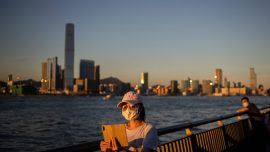Last week, it was publicly announced that Hotel Central on Avenida Almeida Ribeiro had been earmarked for renovation. Having been bought earlier this year by a consortium that includes at least one local company, New Central Development Ltd., the hotel is scheduled to reopen three years from now. It is well timed: the building should look shiny and new for the celebration of the 20th anniversary of the Macau SAR. With support from the Macau Trade and Investment Promotion Institute (IPIM) through a service called “one stop” – intended to assist companies with registering their businesses and implementing new projects – the revitalisation of the hotel is occurring at a time in which urban conservation initiatives are increasing. The now-iconic teal-coloured building suggests the promise of innovation, perhaps even a degree of sustainability, for tourism development in Macau. This is especially true given the shabby state into which it had fallen, becoming infamous for its somewhat unsavoury patronage and businesses – the dubious charms of old, smoky Macau that may not necessarily fit into the colourful hype of East-meets-West the Tourism Office has been promoting to international markets since the liberalisation of the gaming industry. We live, after all, in sanitized times.
Opened in 1928 in a ceremony conducted by then-Governor Tamagnini Barbosa, the original six-turned-12-storey Central, initially named President Hotel, was a pioneer in many ways. In press releases and advertising campaigns from the 1930s and 1940s, one reads that it was considered to be the city’s first “skyscraper” as well as the first edifice in town equipped with elevators. In addition to accommodation, its amenities comprised a fancy restaurant called the “Golden Gate,” the “best beauty parlour in the colony,” a cabaret on the 6th floor, and, of course, a gambling room: the casino “Hao Xing.” It might be considered the prototype of today’s “Integrated Resorts.”
The history and legend of the 88-year-old Hotel Central extends in many directions, from its glamorous beginnings to later salacious events, until private initiative decided to invest it with new purposes. Other privately owned old buildings converted into guesthouses, boutique hotels, or restaurants would make welcome additions to the current tourism landscape. There are profits to be made, and smaller projects such as the Hotel Central, if well designed, could thereby elicit responses from various fringes of the tourist market, appealing to visitors more interested in so-called cultural tourism.
























